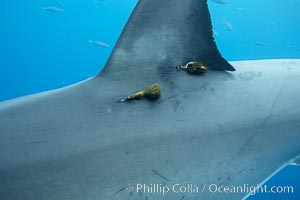
Two satellite tags, below dorsal fin of great white shark. The tags record the sharks movements, relaying data to researchers via satellite.
Species: Great white shark, Carcharodon carcharias
Location: Guadalupe Island (Isla Guadalupe), Baja California, Mexico
Image ID: 21391
Species: Great white shark, Carcharodon carcharias
Location: Guadalupe Island (Isla Guadalupe), Baja California, Mexico
Image ID: 21391
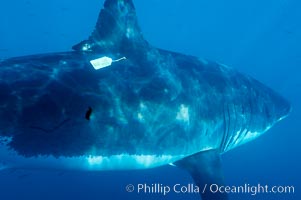
A great white shark bearing a white plastic researcher's identification ID tag near its dorsal fin swims through the clear waters of Isla Guadalupe, far offshore of the Pacific Coast of Baja California. Guadalupe Island is host to a concentration of large great white sharks, which visit the island to feed on pinnipeds and tuna.
Species: Great white shark, Carcharodon carcharias
Location: Guadalupe Island (Isla Guadalupe), Baja California, Mexico
Image ID: 07739
Species: Great white shark, Carcharodon carcharias
Location: Guadalupe Island (Isla Guadalupe), Baja California, Mexico
Image ID: 07739
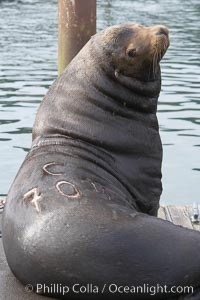
A bull sea lion shows a brand burned into its hide by the Oregon Department of Fish and Wildlife, to monitor it from season to season as it travels between California, Oregon and Washington. Some California sea lions, such as this one C-704, prey upon migrating salmon that gather in the downstream waters and fish ladders of Bonneville Dam on the Columbia River. The "C" in its brand denotes Columbia River. These sea lions also form bachelor colonies that haul out on public docks in Astoria's East Mooring Basin and elsewhere, where they can damage or even sink docks.
Species: California sea lion, Zalophus californianus
Location: Columbia River, Astoria, Oregon
Image ID: 19419
Species: California sea lion, Zalophus californianus
Location: Columbia River, Astoria, Oregon
Image ID: 19419
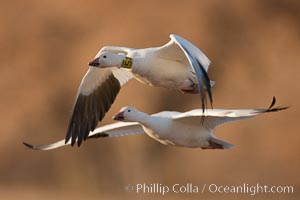
Snow goose bearing neck and leg research ID tags, in flight.
Species: Snow goose, Chen caerulescens
Location: Bosque Del Apache, Socorro, New Mexico
Image ID: 26209
Species: Snow goose, Chen caerulescens
Location: Bosque Del Apache, Socorro, New Mexico
Image ID: 26209
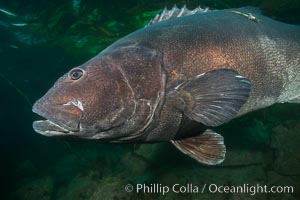
Giant black sea bass with research tag, endangered species, reaching up to 8' in length and 500 lbs, amid giant kelp forest.
Species: Giant black sea bass, Stereolepis gigas
Location: Catalina Island, California
Image ID: 33391
Species: Giant black sea bass, Stereolepis gigas
Location: Catalina Island, California
Image ID: 33391
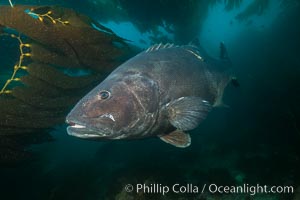
Giant black sea bass with research tag, endangered species, reaching up to 8' in length and 500 lbs, amid giant kelp forest.
Species: Giant black sea bass, Stereolepis gigas
Location: Catalina Island, California
Image ID: 33392
Species: Giant black sea bass, Stereolepis gigas
Location: Catalina Island, California
Image ID: 33392
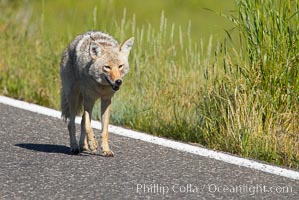
Coyote, Lamar Valley. This coyote bears not only a radio tracking collar, so researchers can follow its daily movements, but also a small green tag on its left ear.
Species: Coyote, Canis latrans
Location: Lamar Valley, Yellowstone National Park, Wyoming
Image ID: 13093
Species: Coyote, Canis latrans
Location: Lamar Valley, Yellowstone National Park, Wyoming
Image ID: 13093
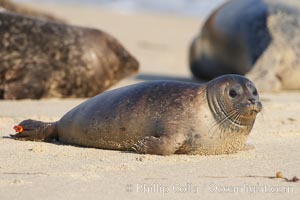
Pacific harbor seal, juvenile, with research identification tag on hind flipper. Childrens Pool.
Species: Pacific harbor seal, Phoca vitulina richardsi
Location: La Jolla, California
Image ID: 18263
Species: Pacific harbor seal, Phoca vitulina richardsi
Location: La Jolla, California
Image ID: 18263
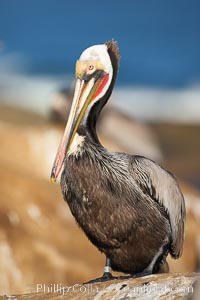
California brown pelican wearing identification tag, winter mating plumage. These tags aid scientists in understanding how the birds travel and recover if they have been rehabilitated.
Species: Brown Pelican, Pelecanus occidentalis, Pelecanus occidentalis californicus
Location: La Jolla, California
Image ID: 18524
Species: Brown Pelican, Pelecanus occidentalis, Pelecanus occidentalis californicus
Location: La Jolla, California
Image ID: 18524
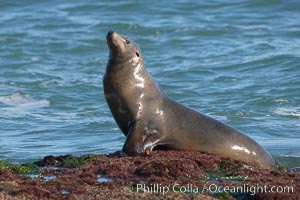
California sea lion wearing identification tag on left foreflipper.
Species: California sea lion, Zalophus californianus
Location: La Jolla, California
Image ID: 18544
Species: California sea lion, Zalophus californianus
Location: La Jolla, California
Image ID: 18544
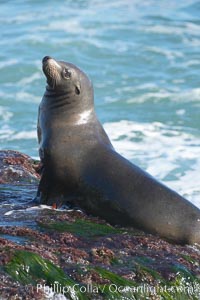
California sea lion.
Species: California sea lion, Zalophus californianus
Location: La Jolla, California
Image ID: 18554
Species: California sea lion, Zalophus californianus
Location: La Jolla, California
Image ID: 18554
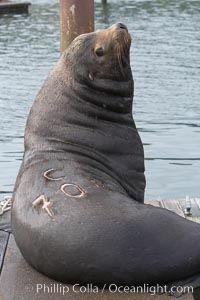
A bull sea lion shows a brand burned into its hide by the Oregon Department of Fish and Wildlife, to monitor it from season to season as it travels between California, Oregon and Washington. Some California sea lions, such as this one C-704, prey upon migrating salmon that gather in the downstream waters and fish ladders of Bonneville Dam on the Columbia River. The "C" in its brand denotes Columbia River. These sea lions also form bachelor colonies that haul out on public docks in Astoria's East Mooring Basin and elsewhere, where they can damage or even sink docks.
Species: California sea lion, Zalophus californianus
Location: Columbia River, Astoria, Oregon
Image ID: 19430
Species: California sea lion, Zalophus californianus
Location: Columbia River, Astoria, Oregon
Image ID: 19430
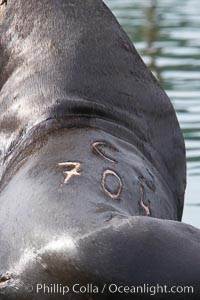
A bull sea lion shows a brand burned into its hide by the Oregon Department of Fish and Wildlife, to monitor it from season to season as it travels between California, Oregon and Washington. Some California sea lions, such as this one C-704, prey upon migrating salmon that gather in the downstream waters and fish ladders of Bonneville Dam on the Columbia River. The "C" in its brand denotes Columbia River. These sea lions also form bachelor colonies that haul out on public docks in Astoria's East Mooring Basin and elsewhere, where they can damage or even sink docks.
Species: California sea lion, Zalophus californianus
Location: Columbia River, Astoria, Oregon
Image ID: 19433
Species: California sea lion, Zalophus californianus
Location: Columbia River, Astoria, Oregon
Image ID: 19433
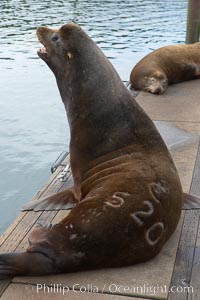
A bull sea lion shows a brand burned into its hide by the Oregon Department of Fish and Wildlife, to monitor it from season to season as it travels between California, Oregon and Washington. Some California sea lions, such as this one C-520, prey upon migrating salmon that gather in the downstream waters and fish ladders of Bonneville Dam on the Columbia River. The "C" in its brand denotes Columbia River. These sea lions also form bachelor colonies that haul out on public docks in Astoria's East Mooring Basin and elsewhere, where they can damage or even sink docks.
Species: California sea lion, Zalophus californianus
Location: Columbia River, Astoria, Oregon
Image ID: 19434
Species: California sea lion, Zalophus californianus
Location: Columbia River, Astoria, Oregon
Image ID: 19434
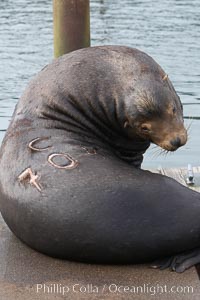
A bull sea lion shows a brand burned into its hide by the Oregon Department of Fish and Wildlife, to monitor it from season to season as it travels between California, Oregon and Washington. Some California sea lions, such as this one C-704, prey upon migrating salmon that gather in the downstream waters and fish ladders of Bonneville Dam on the Columbia River. The "C" in its brand denotes Columbia River. These sea lions also form bachelor colonies that haul out on public docks in Astoria's East Mooring Basin and elsewhere, where they can damage or even sink docks.
Species: California sea lion, Zalophus californianus
Location: Columbia River, Astoria, Oregon
Image ID: 19441
Species: California sea lion, Zalophus californianus
Location: Columbia River, Astoria, Oregon
Image ID: 19441

Leichtag Biomedical Research building, University of California, San Diego (UCSD).
Location: University of California, San Diego, La Jolla
Image ID: 20840
Location: University of California, San Diego, La Jolla
Image ID: 20840
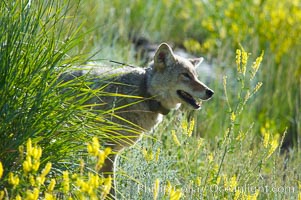
Coyote, Lamar Valley. This coyote bears not only a radio tracking collar, so researchers can follow its daily movements, but also a small green tag on its left ear.
Species: Coyote, Canis latrans
Location: Lamar Valley, Yellowstone National Park, Wyoming
Image ID: 13091
Species: Coyote, Canis latrans
Location: Lamar Valley, Yellowstone National Park, Wyoming
Image ID: 13091
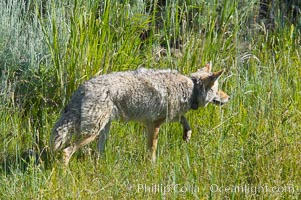
Coyote, Lamar Valley. This coyote bears not only a radio tracking collar, so researchers can follow its daily movements, but also a small green tag on its left ear.
Species: Coyote, Canis latrans
Location: Lamar Valley, Yellowstone National Park, Wyoming
Image ID: 13092
Species: Coyote, Canis latrans
Location: Lamar Valley, Yellowstone National Park, Wyoming
Image ID: 13092
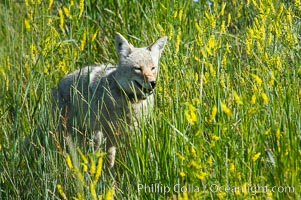
Coyote, Lamar Valley. This coyote bears not only a radio tracking collar, so researchers can follow its daily movements, but also a small green tag on its left ear.
Species: Coyote, Canis latrans
Location: Lamar Valley, Yellowstone National Park, Wyoming
Image ID: 13094
Species: Coyote, Canis latrans
Location: Lamar Valley, Yellowstone National Park, Wyoming
Image ID: 13094
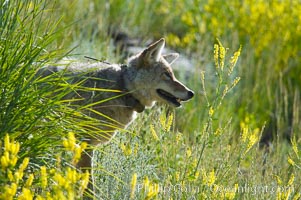
Coyote, Lamar Valley. This coyote bears not only a radio tracking collar, so researchers can follow its daily movements, but also a small green tag on its left ear.
Species: Coyote, Canis latrans
Location: Lamar Valley, Yellowstone National Park, Wyoming
Image ID: 13095
Species: Coyote, Canis latrans
Location: Lamar Valley, Yellowstone National Park, Wyoming
Image ID: 13095
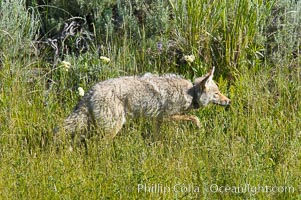
Coyote, Lamar Valley. This coyote bears not only a radio tracking collar, so researchers can follow its daily movements, but also a small green tag on its left ear.
Species: Coyote, Canis latrans
Location: Lamar Valley, Yellowstone National Park, Wyoming
Image ID: 13096
Species: Coyote, Canis latrans
Location: Lamar Valley, Yellowstone National Park, Wyoming
Image ID: 13096